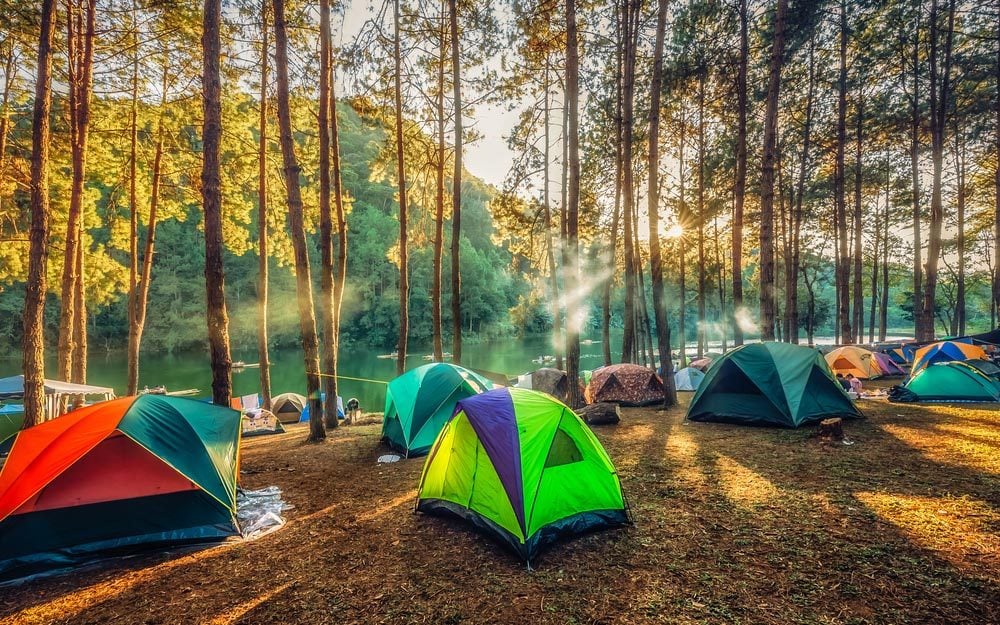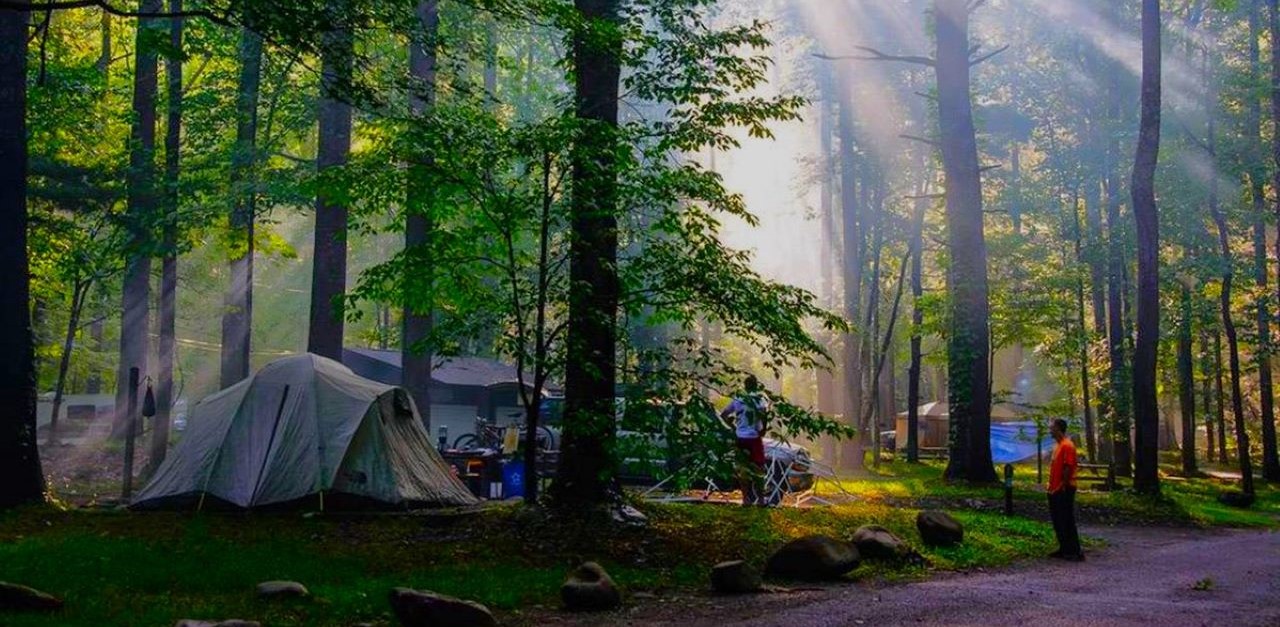
Where Ancient Lands Meet Modern Comfort: Exploring Navajo Nation’s Hookup-Equipped Campgrounds
The Navajo Nation, a vast, sovereign territory larger than 10 U.S. states, beckons travelers with its unparalleled natural beauty, profound cultural heritage, and a landscape that feels both ancient and eternally wild. For those seeking to immerse themselves in this majestic land without fully abandoning the comforts of home, the increasing availability of camping sites with hookups presents an ideal solution. This article delves into the unique appeal of these modern conveniences within the sacred embrace of Diné Bikéyah, exploring existing options, the cultural context, and the burgeoning potential for enhanced visitor experiences.
The Allure of Diné Bikéyah: A Tapestry of Time and Terrain
Stretching across parts of Arizona, New Mexico, and Utah, the Navajo Nation is a land of dramatic contrasts. From the iconic sandstone monoliths of Monument Valley to the deep, spiritual canyons of Canyon de Chelly, the glittering expanse of Lake Powell, and the high desert plateaus dotted with juniper and sage, its vistas are nothing short of breathtaking. It is a place where time seems to slow, where the stars blaze with an intensity rarely seen, and where the echoes of ancient stories resonate with the wind.
For generations, visitors have been drawn to the Navajo Nation for its unparalleled opportunities for outdoor adventure, cultural immersion, and spiritual reflection. However, the sheer remoteness and often rugged terrain have historically limited the accessibility for certain types of travelers, particularly those dependent on the amenities offered by modern RVs. This is where the concept of "hookup camping" on tribal lands becomes not just a convenience, but a bridge.
Bridging Worlds: The Necessity and Comfort of Hookups

Camping with hookups – typically encompassing electricity, water, and sometimes sewer connections – transforms the outdoor experience. For RV enthusiasts, families with young children, or those with specific medical needs, these amenities are not luxuries but necessities. They allow for:
- Extended Stays: No longer limited by battery life or water tank capacity, travelers can linger longer, truly absorbing the rhythms of the land.
- Comfort and Convenience: Air conditioning in summer, heating in winter, refrigeration for fresh food, and hot showers become accessible, making the experience more comfortable and enjoyable in varying weather conditions.
- Accessibility: Hookups open the doors for travelers who might otherwise find primitive camping too challenging, broadening the demographic of visitors who can experience the Navajo Nation.
- Safety and Security: Reliable power allows for charging devices, running medical equipment, and maintaining communication in remote areas.
"The introduction of modern amenities like full hookups at our campgrounds isn’t about diluting the traditional experience," explains Dr. Lena Yazzie, a cultural preservationist and advocate for sustainable tourism on the Nation. "It’s about making our beautiful homeland accessible to more people, ensuring they can visit comfortably and safely, allowing them more time to engage with our culture and landscapes without worrying about the practicalities of primitive camping. It’s a way to invite more people into our home, respectfully."
Key Destinations and Emerging Opportunities
![]()
While the Navajo Nation is vast, dedicated hookup sites are still a developing feature in many areas, reflecting a careful and deliberate approach to tourism infrastructure. However, several locations offer, or are actively developing, facilities that cater to RVs seeking these modern comforts.
Antelope Point RV Park (Page, Arizona)
Perhaps one of the most established and well-regarded hookup facilities directly on Navajo land is the Antelope Point RV Park, located near Page, Arizona, and the stunning waters of Lake Powell. This park boasts full hookups, offering a comfortable base for exploring the iconic Antelope Canyon (via authorized tours), Horseshoe Bend, and the vast recreational opportunities of Lake Powell. Its strategic location makes it an ideal gateway for those entering or exiting the western reaches of the Nation.
"Staying at Antelope Point was a game-changer for our family," shared Mark Jensen, an RV traveler from Colorado. "We could explore the canyons during the day, come back to a comfortable, air-conditioned RV, cook a meal, and then sit outside under the most incredible star-filled sky. It allowed us to truly immerse ourselves without feeling like we were roughing it too much with our kids."
Window Rock Navajo Tribal Park & Veterans Memorial Park (Window Rock, Arizona)
As the capital of the Navajo Nation, Window Rock is a hub of activity and cultural significance. While traditional camping options are more prevalent, the potential for expanded RV facilities with hookups here is significant. The park itself offers a powerful tribute to Navajo Code Talkers and veterans, with impressive rock formations. Developing robust hookup sites here would provide a central, accessible base for visitors interested in the Nation’s government, museums, and annual events. It’s a place where visitors can experience the contemporary pulse of the Diné people.
Near Canyon de Chelly National Monument (Chinle, Arizona)
Canyon de Chelly, a sacred and historically rich area, offers a profoundly spiritual experience. While the monument itself primarily offers primitive or basic campgrounds, the nearby community of Chinle, on Navajo land, is home to a few private and tribally-affiliated campgrounds that often provide electrical and water hookups. These serve as essential staging points for visitors wishing to embark on guided tours into the canyon, led by authorized Navajo guides who share invaluable insights into the ancient cliff dwellings and the living culture within. The availability of hookups nearby means travelers can spend multiple days exploring the canyon’s rim trails and participating in guided excursions without the logistical stresses of limited power or water.
Future Development and Dispersed Opportunities
The Navajo Nation Department of Tourism is actively working on plans to expand and enhance tourism infrastructure across the vast territory. This includes identifying new sites for RV parks with hookups, particularly along major travel corridors (like US-160 and US-89) and near other significant natural and cultural attractions. The goal is to create a network of comfortable, culturally sensitive stopping points that encourage longer stays and deeper engagement.
Furthermore, while full hookups are centralized, some remote trading posts or community centers on Navajo land may offer limited electrical or water access for a fee, a testament to the resourcefulness of the Diné people and their willingness to accommodate travelers. Always inquire locally and respect any requests for payment for services.
Cultural Immersion and Responsible Tourism
Choosing to camp on the Navajo Nation, especially at a tribally-owned or operated site, offers a unique opportunity for cultural immersion that extends beyond mere sightseeing. These sites are often staffed by Diné individuals who can offer local insights, recommend authentic experiences, and share aspects of their culture.
Visitors are encouraged to:
- Engage with Local Guides: For areas like Canyon de Chelly or backcountry explorations, hiring an authorized Navajo guide is not only recommended but often required. These guides provide invaluable historical context, cultural understanding, and ensure visitor safety.
- Support Local Artisans and Businesses: Purchase authentic Navajo crafts directly from the makers, dine at local Diné-owned restaurants, and support enterprises that directly benefit the community.
- Respect Sacred Sites and Practices: The Navajo Nation is a living cultural landscape. Be mindful of traditional practices, respect privacy, and always ask permission before photographing individuals.
- Leave No Trace: Adhere to Leave No Trace principles, packing out everything brought in, staying on marked trails, and preserving the pristine environment for future generations.
"Our land is our life, our history, our future," states tribal elder Sarah Begay. "When visitors come, we welcome them with ‘Yá’át’ééh,’ but we also ask for respect. Respect for our land, our stories, our ways. These campgrounds with hookups, they allow people to stay longer, to learn more, to understand us better. That is a good thing, when done with a good heart."
Challenges and The Path Forward
Developing tourism infrastructure on a scale as vast and culturally significant as the Navajo Nation presents unique challenges. These include:
- Infrastructure Costs: Bringing utilities like water, electricity, and sewer to remote areas is expensive and logistically complex.
- Environmental Stewardship: Balancing the desire for tourism development with the imperative to protect fragile ecosystems and sacred sites.
- Cultural Preservation: Ensuring that tourism growth aligns with Diné cultural values and benefits local communities without causing adverse impacts.
- Workforce Development: Training and empowering tribal members to manage and operate these facilities, ensuring that the economic benefits stay within the Nation.
Despite these hurdles, the vision for sustainable tourism on the Navajo Nation is clear. It aims to create economic opportunities for the Diné people, preserve and promote their rich culture, and offer visitors an authentic, unforgettable experience. Hookup-equipped campgrounds are a vital part of this vision, offering a practical and comfortable entry point for a broader range of travelers.
Conclusion
The Navajo Nation offers a truly singular travel experience, a journey into a land steeped in history, spirituality, and unparalleled natural beauty. The increasing availability of camping sites with hookups represents a significant step forward in making this extraordinary destination more accessible and comfortable for modern travelers. By providing the conveniences of home amidst the grandeur of the high desert, these sites invite visitors to slow down, connect deeply with the land, and engage respectfully with the vibrant Diné culture. It’s an invitation to witness where ancient traditions meet modern comfort, creating memories that will resonate long after the journey home. For those seeking an adventure that nourishes both the spirit and the need for a good night’s rest, the Navajo Nation’s hookup-equipped campgrounds offer an unparalleled gateway to the heart of the American Southwest.


